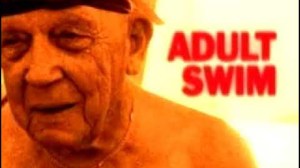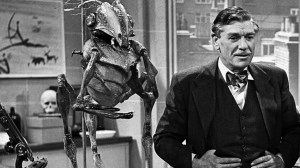Recent episodes of Bruno Heller’s Gotham have started to lay the groundwork for the origin of one of the comic book world’s most famous villains, the Joker. Obviously, even the smallest reference to the beginnings of character as important as the Joker should be viewed as a momentous event, especially for a show like Gotham which is exploring the early beginnings of Batman and his surrounding universe. So in an act of celebration, we thought we’d highlight the essential first appearance/origin stories for the “Clown Prince of Crime.”
Videos by ComicBook.com
Honorable Mention: “Batman: Zero Year” (Batman vol. 2 #24)
The Joker’s origins get a shout out as part of Scott Snyder/Greg Capullo’s epic “Zero Year” storyline – which reimagines the earliest days of the Caped Crusader for the New 52 generation. In the final chapter of “Zero Year’s” front half, Batman attempts to liberate Gotham City from the Red Hood Gang by attacking them at their epicenter. During the chaos, one of the main Red Hood members is knocked off a catwalk and falls towards a vat of chemicals. Batman reaches out his hand to save him, but the man doesn’t seem to care, and falls into the vat with an ominous smile on his face. No one explicitly says this moment marks the birth of the Joker, but anyone who knows their Batman history (of just the stories listed here) doesn’t need the Joker’s creation spelled out for them.
1. Batman #1
In the first issue of Batman’s Golden Age eponymous series, the Joker is introduced and makes an immediate impression, pulling off a number of bold heists and killing no less than four people before Batman and Robin finally apprehend him.
Even by Golden Age standards, Bob Kane and Bill Finger’s Joker is a whirling dervish of chaos and anarchy. His very first victim, a wealthy socialite named Henry Claridge, died with an unnerving smile on his face – something that would go on to become a trademark for the “Clown Prince of Crime.” For his subsequent victims, Joker publicly declares his intentions to rob and kill these people before successfully doing so (despite Batman and Robin trying to stop him). He even impersonates the police chief in order to kill a Gotham City judge.
The fact that Joker is so cold blooded and psychotic in her very first appearance gives credence to the fact that the character didn’t become more campy and goofy until the Silver Age, when Batman, across the board, softened around the edges (that Batman live-action television series certainly fed into that as well). While Batman #1 lacks the sophistication of some of the modern age attempts to shine a light on the Joker’s character, it certainly lays the foundation for many of the great stories that followed.
2. “The Man Behind the Red Hood” (Detective Comics #168)
More than 10 years after first being introduced in Batman #1, Bill Finger, Lew Sayre Schwartz and Win Mortimer offer their very first take on the Joker’s origin, which in turn marks the debut of the “Red Hood” alias.
The story starts with Batman and Robin speaking to a group of college students about a case they never solved – that of a master criminal named Red Hood who escaped the dynamic duo by jumping into a vat of chemicals at the Ace Playing Card Company factory. The class decides to work with Batman and Robin to reopen the case. After a bit of misdirection involving the Red Hood’s identity, the Joker is shown to be tied-up. He admits to Batman, Robin and the students that he was that masked man all those years ago. His hood saved him from certain death, but the chemicals horribly disfigured him, making him appear like a clown. And since the accident took place at a playing card company, the name “Joker” was born.
The Red Hood/chemical bath origin has been paid homage many times over (see the honorable mention and subsequent entries on this list) and it appears that Gotham is following suit with this week’s episode with the Red Hood Gang apparently making an appearance.
3. Batman: The Killing Joke
This landmark graphic novel, written by Alan Moore, with art from Brian Bolland, is considered by many to be one of the greatest Batman stories ever published. This complex and controversial analysis of the relationship between Batman and the Joker (which features an ending that is still being debated years later), adds multiple layers of depth and context to the Golden Age, “The Man Behind the Red Hood” Joker origin.
Rather than paint the Joker as just a nihilistic madman, Killing Joke actually attempts to create some sympathy for the character. Flashback sequences show the Joker as a young man attempting to make it as a stand-up comedian as a way to provide for he and his pregnant wife. When his stand-up career fails, he makes a desperate deal with the mob to rob a chemical plant. The man then attempts to back out of the deal when his wife tragically dies in an accident, but is strong-armed into making the robbery anyway. The future Joker is dressed in a red hood for the heist and jumps into a vat of chemicals to escape Batman a la the Golden Age origin.
Of course Killing Joke has the added benefit of some of the most brilliant artwork you’ll ever see from Bolland, including the iconic panel of Joker emerging from the chemicals, complete with his Cheshire Cat grin. While future creators have played around a bit with Joker’s origin, Killing Joke’s immense popularity has more or less made this the definitive “year one” Joker story.
4. Batman: The Man Who Laughs
This 2005 prestige format one-shot by Ed Brubaker and Doug Mahnke reimagines Joker’s first appearance (see entry No. 1) and functions as an unofficial sequel of sorts to Frank Miller/David Mazzuchelli’s “Batman: Year One” storyline (which ends with police detective Jim Gordon mentioning some new villain named the Joker threatening to poisin Gotham’s water supply). Continuity-wise, this storyline is supposed to represent the first time the Joker and Batman meet in the Post-Crisis on the Infinite Earths universe (when a number of major DC icons had their status quos/continuities reset).
Similar to Batman #1, Joker spends the bulk of this comic issuing public threats to a number of high profile Gotham City residents – threats that he ultimately cashes in on when he kills the socialites.
In the book’s final act, Batman confronts Joker at the reservoir and has the opportunity to kill this lunatic, thus saving countless of innocent people; something Batman inevitably chooses not to do for moral reasons.
5. “Lovers and Madmen” (Batman Confidential #7-12)
This somewhat divisive story, written by Michael Green (of Heroes fame), with art by Denys Cowan, marks yet another recreation of the iconic Red Hood/toxic chemical accident, resulting in the creation of the Joker. Where this arc differs significantly from Moore/Bolland’s The Killing Joke is in its interpretation of the man the Joker was before his accident. The man, just named Jack, is a career criminal who talks about how bored he’s become with humdrum robberies and heists. He starts to make his jobs more challenging (for example, by purposely tripping security alarms) because of this boredom, and ends up drawing out Batman. Jack is immediately fascinated by Batman, primarily because he looks ridiculous in his cape and cowl, and starts to commit more crimes just to get face-time with the Caped Crusader.
Jack eventually takes a woman hostage who turns out to be dating Bruce Wayne. In a fit of rage, Jack slashes the woman across the midsection, which prompts Batman to throw his bat-a-rang at the man, scarring his face near his lips (giving Joker his infamous smile). One accident at a chemical plant later and the Joker is officially born.
Rather than attempt to garner any sympathy for Joker pre-transformation (like The Killing Joke origin), “Lovers and Madman” clearly demonstrates that the man had always been a sociopath and a murderer (similar to Tim Burton’s Batman movie’s interpretation).















